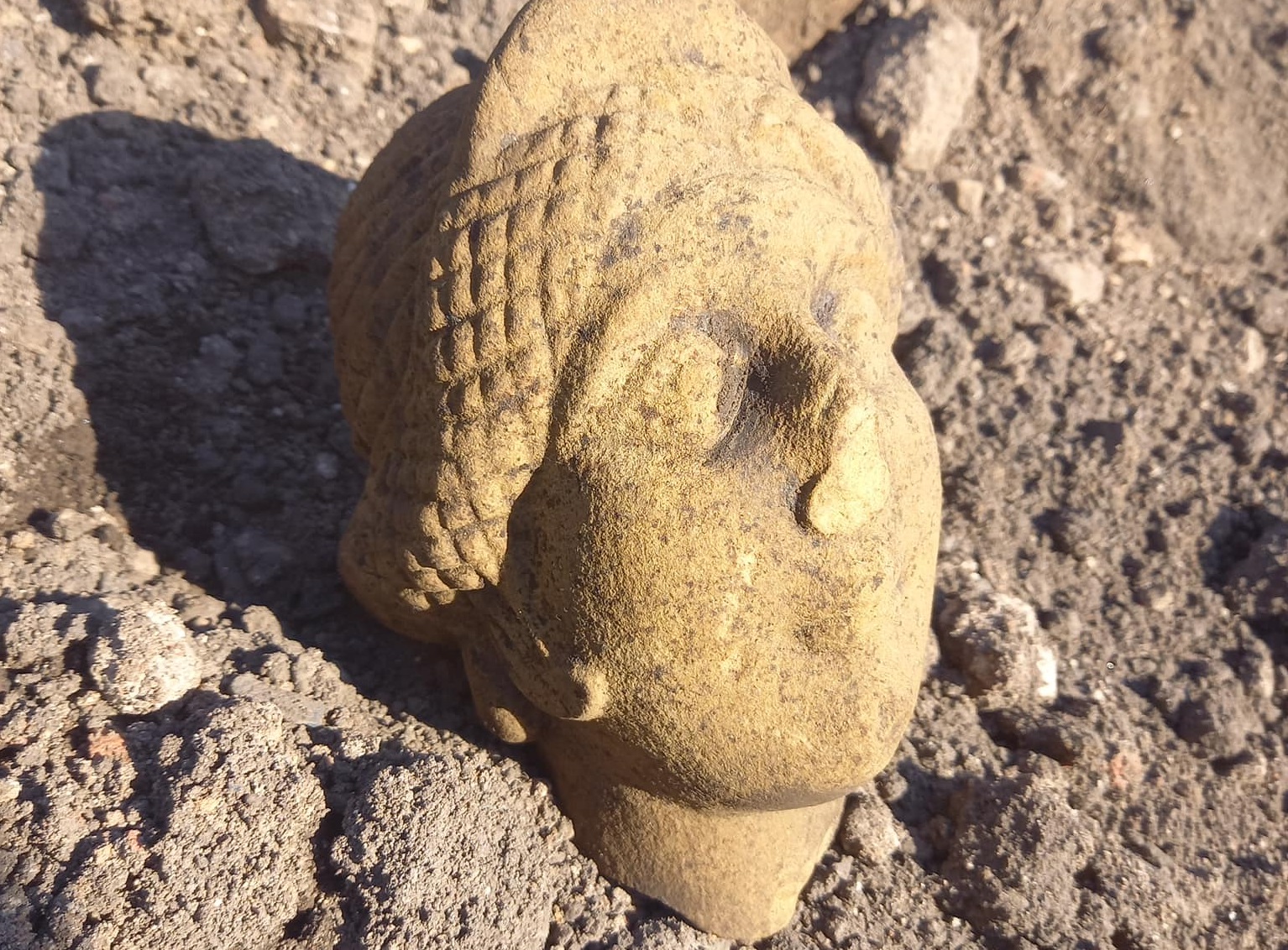Archaeologists from the “Uncovering Roman Carlisle” project have found a carved stone head during excavations of the Carlisle Cricket Club in Carlisle, England.
The project is a community excavation, focusing on uncovering a Roman bathhouse first discovered in 2017. The bathhouse is located near the Roman fort of Uxelodunum (meaning “high fort”), also known as Petriana, in the Carlisle district of Stanwix.
Uxelodunum was constructed to control the territories west of present-day Carlisle and an important crossing on the River Eden. The fort was garrisoned by the Ala Petriana, a 1,000-strong cavalry unit, whose members were all granted Roman citizenship for valour on the field.
The stone head was found in a monumental Roman structure located south of the bathhouse, where earlier in 2024 archaeologists found the cremated remains of a young woman.
This stone head measures 18 cm x 13 cm and is thought to depict a woman with a Classical Roman hairstyle that is reminiscent of the kind worn by Empress Julia Domna (AD 193 to 211). The discovery follows on from two monumental head sculptures uncovered at the site in 2023.
Previous excavations at the bathhouse site have also discovered engraved gems known as intaglios, figurines, animal bones, imperial-stamped tiles, and a rare lump of Tyrian purple.
Excavations this autumn intend to expand research on the monumental structure in the southern area of the site, and also investigate the vast scale of the bathhouse, which remains to be fully determined.
The autumn excavation will also provide free and easy access opportunities for Cumberland residents to take part in archaeology and heritage, or for groups, schools, and individuals to visit a live archaeological excavation. Find out more at: www.uncoveringromancarlisle.co.uk
Header Image Credit : Cumberland Council (facebook)
Sources : Cumberland Council







